Elephant’s Heartbreaking Attempt to Help Injured Friend Shot by Arrow, While Calf is Freed from Snare in New Wildlife Documentary
A new nature documentary offers a stunning view of the fragile relationship between humans and wildlife along the Equator, captured through aerial footage.
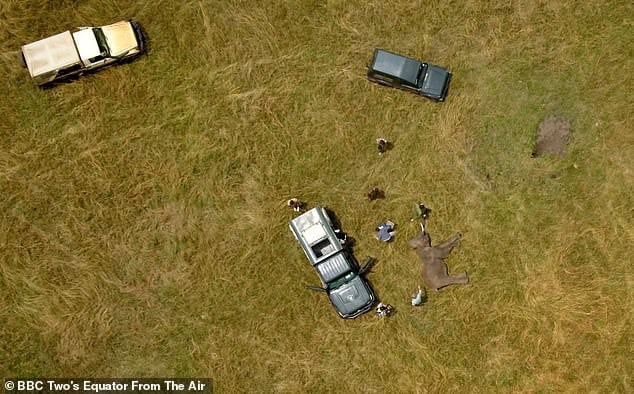
The team, led by wildlife cameraman and presenter Gordon Buchanan, works urgently to help the wounded elephant.
After the elephant is hit with a tranquilizer dart, two vehicles carrying the vets move in, but their approach is interrupted by another elephant, who tries to assist its injured companion. Using a helicopter, Buchanan helps steer the herd away, allowing the vets to get closer.
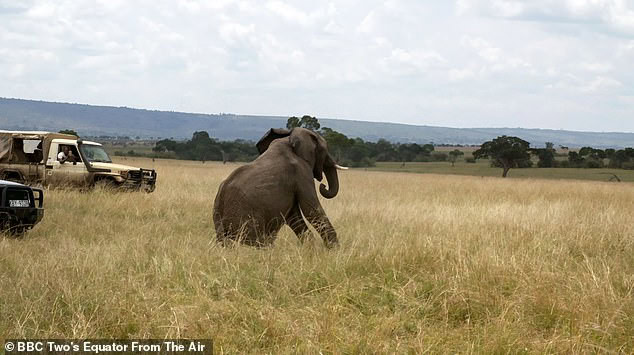
Gordon uses the noise from the helicopter to drive the herd off, giving the medical team a clear shot to sedate the injured elephant. He notes that elephants are incredibly social animals, bonded by strong connections.
As one of the elephants attempts to push the wounded animal up with its trunk, Gordon reflects on the scene: “It just shows how compassionate elephants are. Three vehicles are trying to chase it away, and it doesn’t want to leave.”
Eventually, the caring elephant retreats, allowing Dr. Limo and her team to tend to the tranquilized animal.
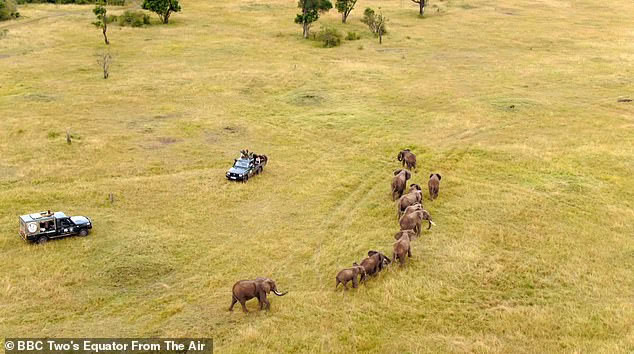
The barbed arrow, which had been attached to a wooden shaft, is removed while the elephant remains sedated. Despite the graphic nature of the treatment, the animal is spared any pain.
Within 45 minutes, the injured elephant returns and quickly rejoins its herd, leaving Gordon impressed by the swift recovery. He adds, “Migratory animals need space, and we’re taking that space away from elephants.”
The team is called to help a baby elephant with a snare wrapped around its trunk. The rescue becomes an emotional moment for Buchanan, who looks visibly distressed as the vets work on the calf.
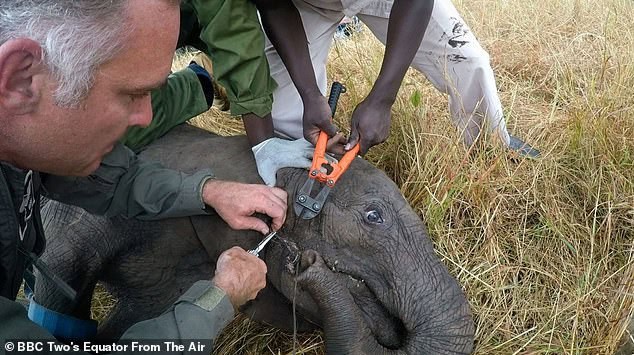
Thankfully, they manage to free the young elephant from the potentially fatal snare, and it is soon reunited with its mother.
During the episode, Gordon also flies alongside Mark Goss, CEO and pilot of the Mara Elephant Project. While heading to aid the injured elephant, they spot a large herd below, including several calves.
They explain how elephants increasingly conflict with farmers relying on the same land for crops, often leading to clashes.

Mark also shares that the conflict was much worse before they acquired a helicopter in 2012. “In one year, we found 120 elephant carcasses before the helicopter,” he reveals.
The episode highlights the humanitarian crisis at the Bidi Bidi refugee settlement in Uganda, which houses 280,000 South Sudanese refugees.
Buchanan meets with local men using smartphones and GPS to map the area, assisting in the aid distribution.
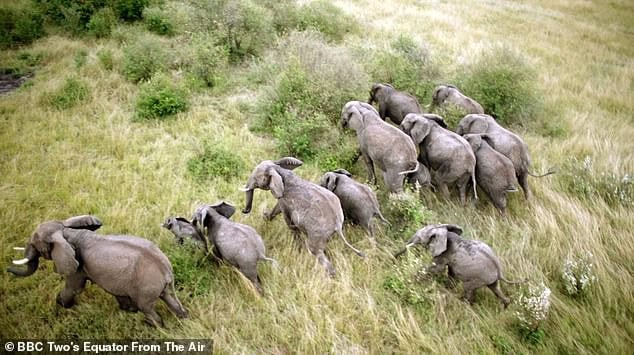
He also visits a school that serves 3,800 children but has only 15 classrooms, far short of the 36 needed to accommodate all the students.
In Gabon, Buchanan sees how nearly 90 percent of the country is covered by tropical rainforests, home to wildlife such as chimpanzees, leopards, and a significant portion of the world’s remaining gorillas. However, these rainforests are threatened due to the rich gold deposits beneath them.
As Buchanan looks down from the helicopter, he describes an abandoned mine as a “big scar on the forest.”
Read more Elephant News.
Comments
Post a Comment